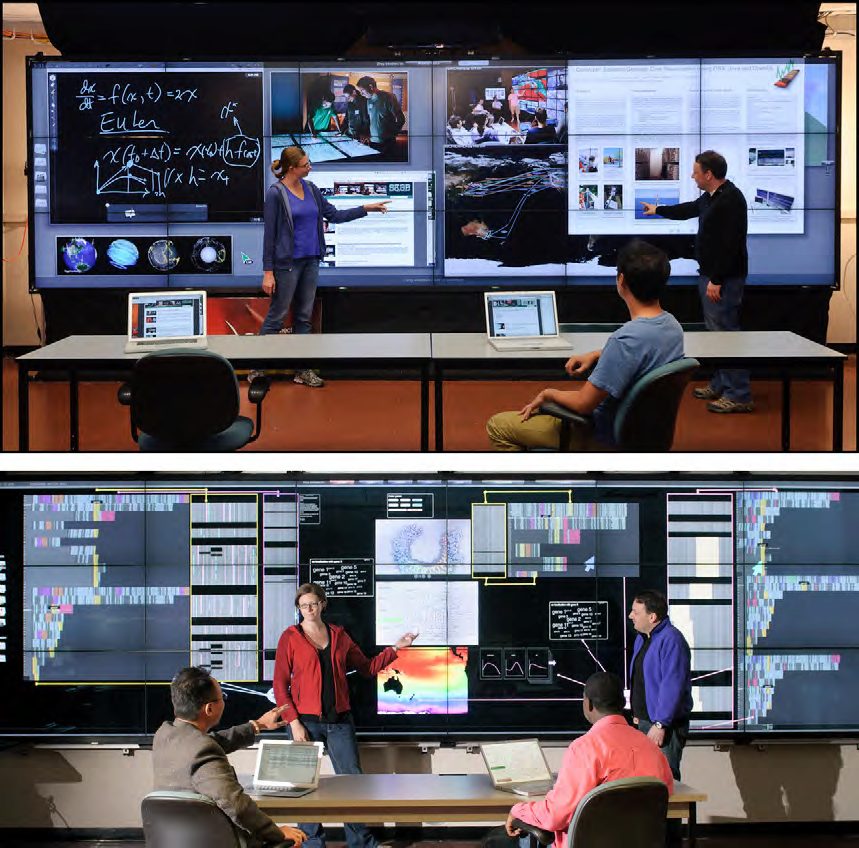Multiuser-Centered Resource Scheduling for Collaborative Display Wall Environments
April 1st, 2015
Categories: Applications, Human Factors, Software, Visualization, Tele-Collaboration, Visual Analytics, Visual Informatics, Remote Collaboration, Human Computer Interaction (HCI), Data Science

Authors
Nam, S., Reda, K., Renambot, L., Johnson, A., Leigh, J.About
The popularity of large-scale, high-resolution display walls, as visualization endpoints in eScience infrastructure, is rapidly growing. These displays can be connected to distributed computing resources over high-speed network, providing effective means for researchers to visualize, interact with, and understand large volumes of datasets. Typically large display walls are built by tiling multiple physical displays together and running a tiled display wall required a cluster of computers. With the advent of advanced graphics hardware, a single computer can now drive over a dozen displays, thereby greatly reducing the cost of ownership and maintenance of a tiled display wall system. This in turn enables a broader user base to take advantage of such technologies. Since tiled display walls are also well suited to collaborative work, users tend to launch and operate multiple applications simultaneously. To ensure that applications maintain a high degree of responsiveness to the users even under heavy use loads, the display wall must now ensure that the limited system resources are prioritized to maximize interactivity rather than thread-level fair sharing or overall job-completion throughput. In this paper, we present a new resource scheduling scheme that is specifically designed to prioritize responsiveness in collaborative large display wall environments where multiple users can interact with multiple applications simultaneously. We evaluate our scheduling scheme with a user study involving groups of users interacting simultaneously on a tiled display wall with multiple applications. Results show that our scheduling framework provided a higher frame rate for applications, which led to a significantly higher user performance (approx. 25%) in a target acquisition test when compared against the traditional operating system scheduling scheme.
Keywords: Scheduling, Human factors, Algorithms, Interactive systems, Distributed graphics
Resources
URL
Citation
Nam, S., Reda, K., Renambot, L., Johnson, A., Leigh, J., Multiuser-Centered Resource Scheduling for Collaborative Display Wall Environments, Future Generation Computer Systems, vol 45, pp. 162-175, April 1st, 2015. https://doi.org/10.1016/j.future.2014.08.012